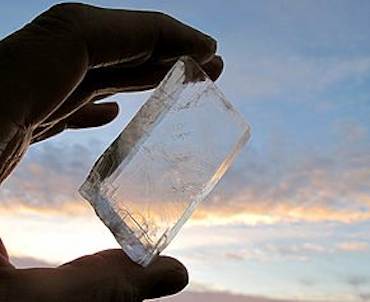 A rough, whitish block recovered from an Elizabethan shipwreck may be a sunstone, the fabled crystal believed by some to have helped Vikings and other medieval seafarers navigate the high seas, researchers say.
A rough, whitish block recovered from an Elizabethan shipwreck may be a sunstone, the fabled crystal believed by some to have helped Vikings and other medieval seafarers navigate the high seas, researchers say.
In a paper published earlier last week, a Franco-British group argued that the Alderney Crystal – a chunk of Icelandic calcite found amid a 16th century wreck at the bottom of the English Channel – worked as a kind of solar compass, allowing sailors to determine the position of the sun even when it was hidden by heavy cloud, masked by fog, or below the horizon.
In one of the Icelandic sagas written in the 13th century, the sunstone is noted as a means of locating the sun on a snowy overcast day: “Then the king made them fetch the solar stone and held it up and saw where light radiated from the stone and thus directly verified (where the sun was located).”
Read more about how the Sunstone works on Wikipedia, or see it demonstrated in this NASA kids’ video below.
(READ about the discovery from CBS News/AP)



















